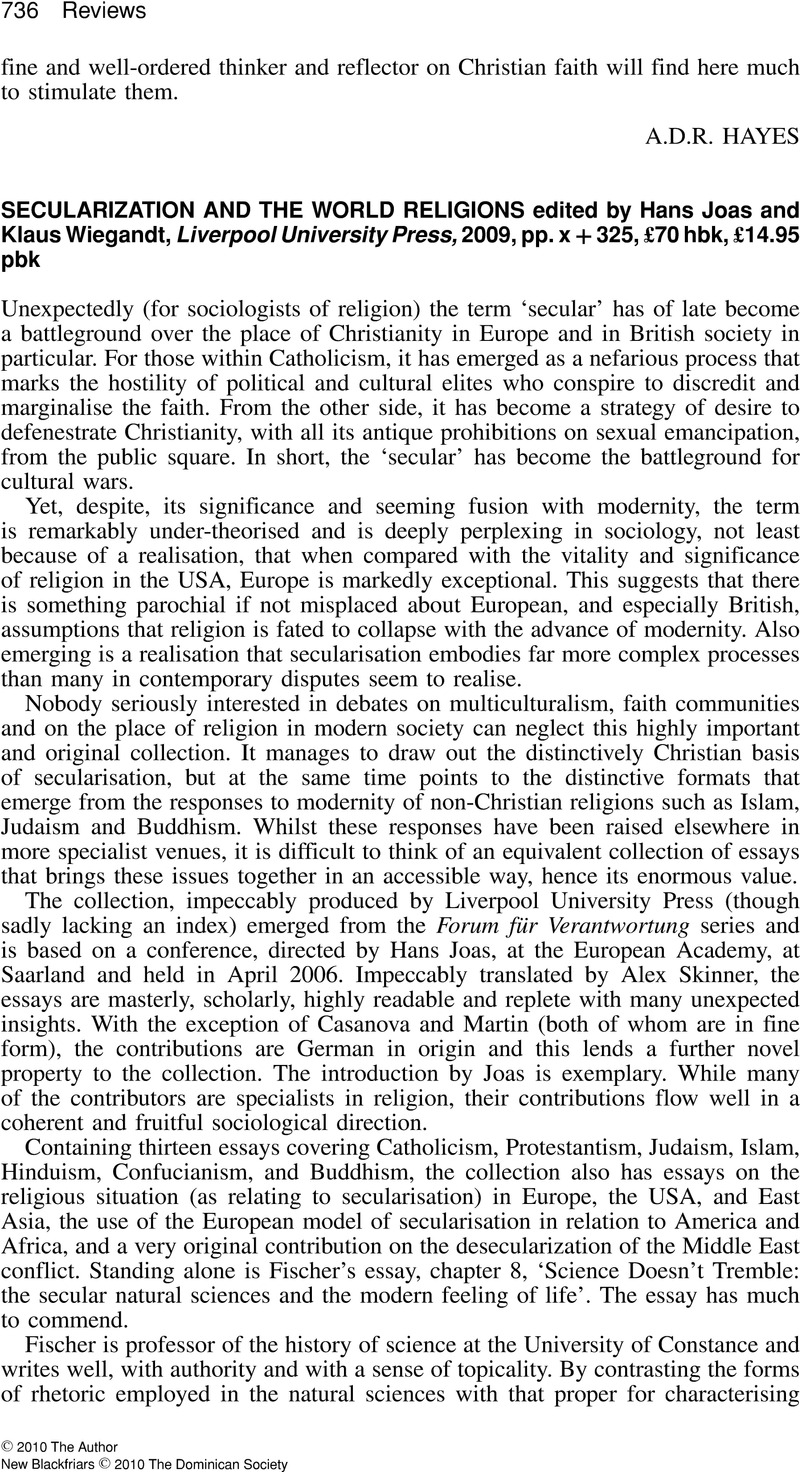No CrossRef data available.
Article contents
Secularization and the World Religions edited by Hans Joas and Klaus Wiegandt, Liverpool University Press, 2009, pp. x + 325, £70 hbk, £14.95 pbk
Review products
Secularization and the World Religions edited by Hans Joas and Klaus Wiegandt, Liverpool University Press, 2009, pp. x + 325, £70 hbk, £14.95 pbk
Published online by Cambridge University Press: 01 January 2024
Abstract
An abstract is not available for this content so a preview has been provided. Please use the Get access link above for information on how to access this content.

- Type
- Reviews
- Information
- Copyright
- Copyright © 2010 The Author. New Blackfriars © 2010 The Dominican Society.


